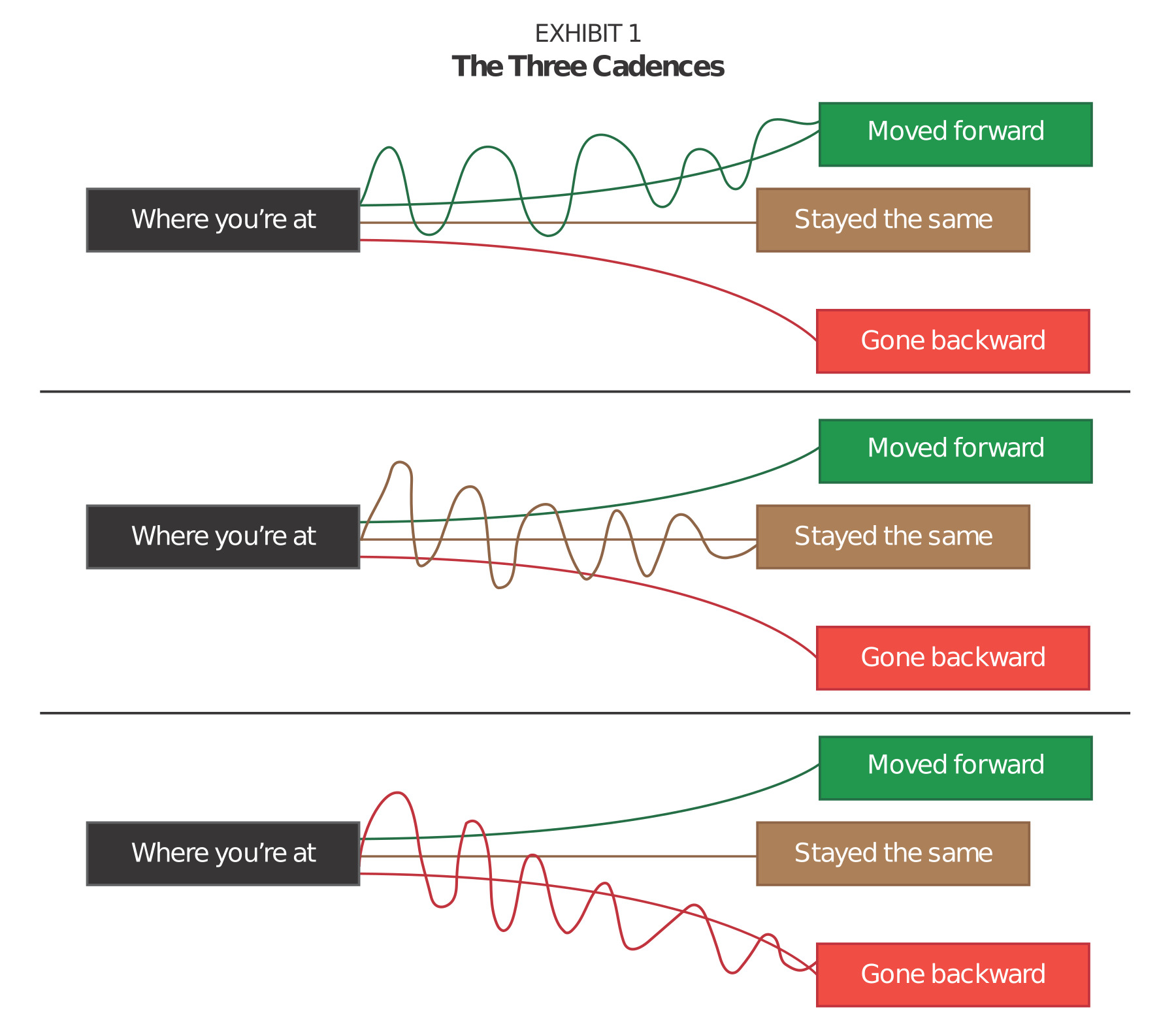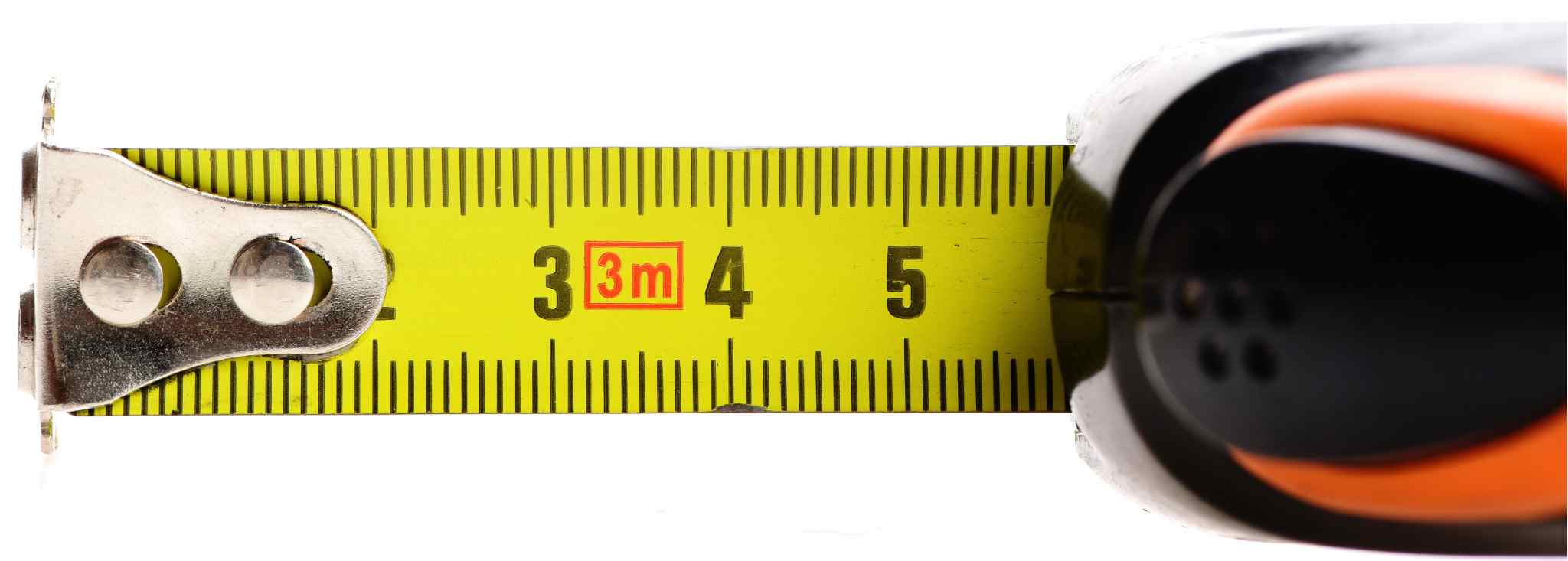Key Takeaways
- Highly Highly successful people and teams operate with a predictable cadence—a rhythm—that empowers them to both stay on target and quickly re-center themselves.
- Develop separate cadences for your daily action steps and for discrete or one-off initiatives.
- Your cadence must be directly tied to the end results you’re aiming for.

People who are consistently highly successful in their endeavors—personal, professional or otherwise—rarely stumble their way into great outcomes. While luck can and often does play a part in success, consistent winners benefit by moving forward deliberately and pursuing success on purpose.
Just as important is that they use processes for staying on the right track and making steady progress. As they attain results at each step, they respond decisively—thereby keeping themselves moving in the right direction with additional efficiency and consistency.
The upshot: Successful people, including successful teams of people, operate with a predictable cadence—a rhythm—that empowers them to both stay on target the vast majority of the time and quickly re-center themselves on their target when they veer off course.
With that in mind, here’s a look at one process you can use to help yourself and the people around you (employees, co-workers, fellow board members and so on) co-elevate each other by developing the right cadence to achieve your individual and collective goals.
Three conditions
At all times, each of us experiences one of three conditions: We are moving ahead, we are staying the same, or we are moving backward. What that means is that one year from now (or two or five or ten), you will have progressed forward, remained in the place you are today or drifted in reverse.
The way we move ahead is through decisiveness—which consists of three key components:
Accurate thinking + Deliberate decisions + Disciplined action
We move backward through drifting—which also consists of three key components:
Distraction + Lack of discipline + Poor habits
If, after 12 months, you are ahead of where you are today, it will have been a good year. Exactly how far ahead you progress will depend on the accuracy of your thinking, the deliberateness of your decisions and the discipline of your actions. Similarly, if you have fallen behind, the extent of your drifting will depend on how distracted and undisciplined you were as well as other habits you engaged in that contributed to your backsliding.
The power of cadence and time
Decisiveness and/or drifting are driven by two main factors that determine how far ahead or behind you end up in pursuit of your goals.
- Your daily, weekly and monthly cadences. This is the cycle of activity that you follow.
- Time. As time passes, the results of your cadence—whether decisiveness or drift—compound.
Of course, you cannot control time or change it to meet your whims. Time will march on exactly as it always has. The good news: You can exert tremendous control over your cadence—the rhythm of your actions (and the actions of people on any team you lead or are a member of).
Rhythm occurs when our upswings and downswings eventually settle into a narrower range that reflects the pattern of our daily, weekly and monthly behavior.
It’s important here to recognize two things:
1. All people—and all teams and organizations—have a cadence. You can’t not have one. So the issue becomes whether you pursue a cadence that is helpful and moves you toward your goals or one that’s unhelpful and causes you to drift away from them.
2. Another (unfortunate) fact is that far too often, people and teams don’t deliberately choose their cadence—they instead let themselves be moved by whatever rhythm naturally occurs.
This is where people and teams who are highly successful on a consistent basis separate themselves from their peers. They actively pursue a cadence that is tied to the key result they want to generate. They are deliberate about the rhythms they create and maintain with their actions, using formal tools and structures to better ensure that a cadence they choose becomes an ingrained habit.
Ultimately, there are three cadences—green line, amber line and red line—that you or your team can potentially find itself in, as shown in Exhibit 1.
- In the green line cadence, you are swimming—positively and deliberately.
- In the amber line cadence, you are floating—conserving energy and looking to play it safe.
- In the red line cadence, you are sinking—slowly but certainly, even if it’s not immediately obvious.

At the start of an activity, it may not feel like there’s a great difference between the red line and the green line. It seems as though there’s plenty of time. Unfortunately, as each month passes, the gap between the red line and the green line increases. If you’re not on the green line, you drift further from the progress you could have made. In contrast, every day (and week and month) you spend on the green line is a moment of moving forward with purpose. Again, time compounds your direction—be it forward (green line) or backward (red line).
The key is to ensure your cadence—and the cadence of your group, if applicable—stays on or around the green line as often as possible. Make no mistake: You will drop below the green line sometimes. When you do, take corrective action and—just as important—forgive yourself. When you rise above the green line, reinforce it with action and celebrate the moment.
Over time, cadence becomes habit. The volatility diminishes and the wave bands narrow—and you end up spending most of your time moving forward on the green line of progress.
Set your goals
As noted, you can—and indeed should—choose the rhythm of your path. Clearly, the greenline cadence is where you want to be if you seek to achieve big goals and co-elevate a team you’re on or that you lead.
But to accomplish that, you first need to get clear on your goals so that you can design a green-line cadence that is tied directly to those desired outcomes. You also must understand what goes into that cadence so you know if you’re setting yourself up for success—as well as what goes into a red-line cadence so you will notice if you begin to drift and go backward.
Create your cadence
Your cadence will help ensure that you get things done and will hold you accountable to yourself. The same goes for a team—it will motivate the team to do what it needs to do and hold each member accountable to themselves and to each other.
Cadences don’t have to be complicated to be effective. In most situations, there are two general types of activities and thus two general types of cadences:
1. Day-to-day activities. These activities are the business-as-usual tasks. You can set a cadence for these activities and let it run.
2. One-time projects. These include any kind of discrete initiatives. They typically have a specific time frame, budget and outcome. Each of these projects needs its own cadence because each one-off will have unique characteristics.
To determine any cadence, ask yourself questions such as these:
- What results do I want at the end of each month?
- What are the vital few actions that are required to achieve those results?
- What should the cadence look like to accomplish them?
- How much time is needed for each activity (or meeting or event, etc.)?
- Who is involved?
- What specifically should happen at each activity/meeting/event?
Advice: It may be helpful to evaluate your schedule from the past three months (not what was scheduled, but what actually took place). How was that rhythm? What would the idea rhythm look like?
It’s usually possible to establish a set of straightforward cadences that effectively accomplish the great majority of day-to-day activities and one-time projects on your list.
Measure progress
Once you have clarity about your goals and understand what a green-line cadence would look like, it’s time to begin measuring your progress along that line. Progress tracking can be done on a very simple positive/negative scale. Each day, your cadence (and/or the group’s cadence) will move you toward your goals (swimming), keep you stationary (floating) or let you drift away from your goals (sinking). That means you can rate every day as either a greenline, amber-line or red-line day. At the end of each month, you can add up the number of days in each category to see where you are on the path.
Of course, the goal is to spend most of the time swimming in the right direction. Each month, celebrate the wins, catch the lessons, make the changes and step into the next month. It is all
about progress—and every small step toward
green is progress.


0 Comments